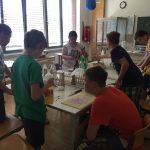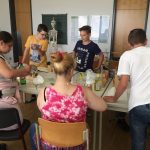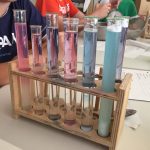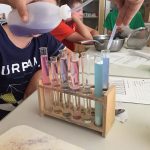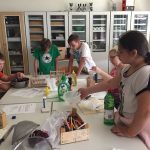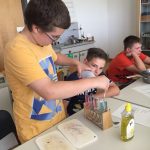The Power of Hydrogen: exploring chemistry with red cabbage
While younger children in primary classes explore elements in categories like air, water, fire and earth, our secondary school pupils enter science. A simple experiment with red cabbage shows how acids and bases can be detected.
The pupils of the 6th/7th class carried out an experiment. They used indicators to prove whether a substance is an acid or a base. The indicator liquid is the juice of red cabbage. Here is a list of required objects and the steps of the experiment.
● fresh red cabbage
● 2 bowls or pots
● strainer
● knives and boards
● lukewarm water
● lemon juice
● vinegar
● lemonade
● baking soda or soda
● washing powder
● dishwashing liquid or pipe cleaner
● water
● 7 glasses, preferably of same size
● pens
1. Prepare the cabbage
Cut the cabbage (4 to 6 large leaves) with the knife on the board into fine strips and place in a pot or a bowl. Fill the pot with lukewarm water until the red cabbage strips are well covered. Let stand for 10 minutes and stir occasionally. The result is a strong blue aqueous solution. Then everything is poured through a strainer. Catch the red cabbage juice in a bowl.
2. Prepare the gasses
Place the seven glasses next to each other and fill them with water until half full. Then put the different substances into the glasses one after the other. Make sure to clean the spoon after each turn.
Glass 1: two spoons of lemon juice
Glass 2: two tablespoons of vinegar
Glass 3: two tablespoons of lemonade
Glass 4: only tap water
Glass 5: a teaspoon of baking soda or soda
Glass 6: a teaspoon of washing powder
Glass 7: a few drops of detergent or a teaspoon of pipe cleaner
Then you can fill the glasses with the red cabbage juice.
3. Watch and describe what is happening…
- what do you see?
- everyone is involved
- Glasses with indicator liquid
- Glasses are filled
- The experiment is prepared.
- attentive pupils….

